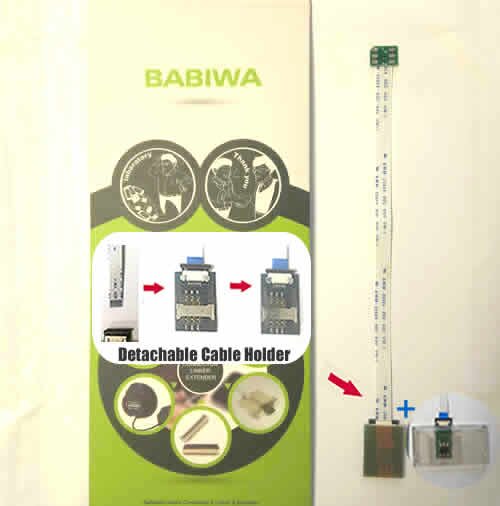施工実績

1 4 Rules of Debit DR and Credit CR Financial and Managerial Accounting
2022.01.11Contents:

Each month, you prepare a trial balance showing your company’s position. After preparing your trial balance this month, you discover that it does not balance. The debit column shows $2,000 more dollars than the credit column.
Here’s Why Applied Materials (NASDAQ:AMAT) Can Manage Its Debt Responsibly – Simply Wall St
Here’s Why Applied Materials (NASDAQ:AMAT) Can Manage Its Debt Responsibly.
Posted: Wed, 19 Apr 2023 12:37:04 GMT [source]
Therefore, the Cash account is debited to increase its balance. In the first transaction, the company increased its Cash balance when the owner invested $5,000 of her personal money in the business. (See #1 in the T-account above.) In our second transaction, the business spent $3,000 of its cash to purchase equipment. Hence, item #2 in the T-account was a credit of $3,000 in order to reduce the account balance from $5,000 down to $2,000.
Record a Customer Payment on a Previous Credit Sale
For example, asset accounts and expense accounts normally have debit balances. Revenues, liabilities, and stockholders’ equity accounts normally have credit balances. Since assets are on the left side of the accounting equation, both the Cash account and the Accounts Receivable account are expected to have debit balances. Therefore, the Cash account is increased with a debit entry of $2,000; and the Accounts Receivable account is decreased with a credit entry of $2,000.
For a credit account, the contra account is a debit account, and for a debit account, the contra account is a credit account. As a result, the natural balance of a contra account is always opposite to the original accounts. LO 3.5Post the following November transactions to T-accounts for Accounts Payable and Inventory, indicating the ending balance .
Table 1.1 shows the normal balances and increases for each account type. Since assets are on the left side of the equation, an asset account increases with a debit entry and decreases with a credit entry. Conversely, liabilities are on the right side of the equation, so they are increased by credits and decreased by debits. The same is true for owners’ equity, but it contains net income that needs a little more explanation, which we’ll do in the next section. Owners’ equity accounts represent an owner’s investment in the company and consist of capital contributed to the company and earnings retained by the company.
The easiest way to remember them is that debits are on the left and credits are on the right. This means debits increase the left side of the balance sheet and accounting equation, while credits increase the right side. Since the transaction has one asset increasing and one asset decreasing by the same amount, there will be no change in the cumulative totals for the accounting equation. For example, Cash has a final balance of $24,800 on the debit side. This balance is transferred to the Cash account in the debit column on the unadjusted trial balance.
- It means, according to the accounting equation, the assets for that accounts are higher than the sum of shareholders’ equity and liabilities.
- LO 3.4Identify whether ongoing transactions posted to the following accounts would normally have only debit entries , only credit entries , or both debit and credit entries .
- This is because balance sheets are two different views of a singular business.
- Learn more about this topic, accounting and related others by exploring similar questions and additional content below.
- Some examples of accounts payables are services such as transportation and logistics, licensing, or marketing services.
In the accounting equation, liabilities appear on the right side of the equal sign. The more you work with a normal balance and understand it, the better you’ll get at using it. Or you can hire a professional accountant who already has all the knowledge and experience of the normal balance of accounts to do the work for you. On the internal level, balance sheets let organizations analyze their current activities to better implement measures to correct and improve company performance.
There are two ways of how accounts payable are measured for entry in the accounting journal. The revenues a company earns from selling the products are usually credit in accounts payables on the normal balance. This usually happens for the retailers, who sell the things they receive on credit to the consumer. Let’s say there were a credit of $4,000 and a debit of $6,000 in the Accounts Payable account. Since Accounts Payable increases on the credit side, one would expect a normal balance on the credit side. However, the difference between the two figures in this case would be a debit balance of $2,000, which is an abnormal balance.
Double Entry Bookkeeping
Each of the restaurant bookkeepings in a trial balance extracted from the bookkeeping ledgers will either show a debit or a credit balance. The normal balance of any account is the balance which you would expect the account have, and is governed by the accounting equation. The normal balance shows debit in the accounts payable when the left side is positive. It means, according to the accounting equation, the assets for that accounts are higher than the sum of shareholders’ equity and liabilities.
Comerica Incorporated : FIRST QUARTER 2023 NET INCOME OF $324 MILLION, $2.39 PER SHARE – Form 8-K – Marketscreener.com
Comerica Incorporated : FIRST QUARTER 2023 NET INCOME OF $324 MILLION, $2.39 PER SHARE – Form 8-K.
Posted: Thu, 20 Apr 2023 10:45:15 GMT [source]
For example, if an asset account which is expected to have a debit balance, shows a credit balance, then this is considered to be an abnormal balance. All of these products or services are prime examples of accounts payable. The companies usually do not pay for these services or products in cash, because it can impact the cash positions in the balance sheets of the company.
A T-account is called a “T-account” because it looks like a “T,” as you can see with the T-account shown here. A. An investor invests an additional $25,000 into a company receiving stock in exchange. Sign up to receive more well-researched small business articles and topics in your inbox, personalized for you. Tim is a Certified QuickBooks Time Pro, QuickBooks ProAdvisor, and CPA with 25 years of experience. He brings his expertise to Fit Small Business’s accounting content. What do you do if you have tried both methods and neither has worked?
How to Analyze Accounting Transactions, Part One
While each account has a normal balance, it’s possible for accounts to have either a credit or debit balance, depending on the bookkeeping entries in the account. The accounts’ normal balance is among the most important forms of accounting. Investors and business owners can use the normal balance to determine the financial situation of a company, including how much debt the business has and how many properties it owns. To show how the debit and credit process works within IU’s general ledger, the following image was pulled from the IUIE database. Employees who are responsible for their entity’s accounting activities will see a file such as the one below on more of a day-to-day basis.
Seniors stay on their feet on April Falls Day – Mirage News
Seniors stay on their feet on April Falls Day.
Posted: Thu, 20 Apr 2023 07:38:00 GMT [source]
Debits (abbreviated Dr.) always go on the left side of the T, and credits (abbreviated Cr.) always go on the right. A. January 22, purchased, an asset, merchandise inventory on account for $2,800. The business collects from one of its clients for services rendered earlier in the month $1,500. Sixty percent was paid in cash, and the remaining customers asked to be billed.
Record Inventory Purchased for Cash
Unfortunately, you will have to go back through one step at a time until you find the error. Review all the Normal Balances standard listed within the document to gain pertinent knowledge of accounting at IU. After reviewing, if users have questions, reach out to the campus office or the Accounting and Reporting Services team at This section outlines requirements and best practices related to Accounting Fundamentals – Normal Balances. While not required, the best practices outlined below allows users to gain a better picture of the entity’s financial health and help identify potential issues on a more frequent basis. This allows organizations to identify errors, mistakes and pitfalls which can be remedied quickly and prevent larger issues in the future.
- LO 3.5Discuss how each of the following transactions for Watson, International, will affect assets, liabilities, and stockholders’ equity, and prove the company’s accounts will still be in balance.
- When we’re talking about Normal Balances for Expense accounts, we assign a Normal Balance based on the effect on Equity.
- The credit is the usual version of the normal balance for the accounts payable.
He most recently spent two years as the accountant at a commercial roofing company utilizing QuickBooks Desktop to compile financials, job cost, and run payroll. If a trial balance is in balance, does this mean that all of the numbers are correct? It is important to go through each step very carefully and recheck your work often to avoid mistakes early on in the process. Amounts at the top of each debit and credit column should have a dollar sign. Outside users typically have to submit the balance sheet on a year-by-year form according to a schedule, such as by month, quarter, or year.
Later, the debit balance in Advertising Expense will be transferred to the owner’s capital account. Please note that if an account that is normally a debit balance will be increased by debit entries, while accounts that normally have a credit balance are increased by credit entry. Adding a debit entry for an asset account increases the asset balance while adding a credit entry to liability accounts increases the liability. Let’s use what we’ve learned about debits and credits to determine what this accounting transaction is recording. The first step is to determine the type of accounts being adjusted and whether they have a debit or credit normal balance.

Accountants record increases in asset, expense, and owner’s drawing accounts on the debit side, and they record increases in liability, revenue, and owner’s capital accounts on the credit side. An account’s assigned normal balance is on the side where increases go because the increases in any account are usually greater than the decreases. Therefore, asset, expense, and owner’s drawing accounts normally have debit balances.
Debit simply means on the left side of the equation, whereas credit means on the right hand side of the equation as summarized in the table below. If the business has a loss, the owner has a less valuable business. If an account has aNormal Debit Balance, we’d expect that balance to appear in theDebit side of a column. If an account has aNormal Credit Balance, we’d expect that balance to appear in theCredit side of a column. In extremely rare cases, the companies extend the credit to their suppliers. The big companies usually provide a credit line to their important suppliers during economic distress.
If the owner takes out money from the business (owner’s withdrawal), their equity in the business decreases. Every transaction that happens in a business has an impact on the owner’s Equity, their value in the business. This reflects the monetary amount for products or services from the suppliers that a company has received from one of its suppliers, but has not paid for it yet. Learn more about this topic, accounting and related others by exploring similar questions and additional content below.

Financial accounting is one of the branches of accounting in which the transactions arising in the business over a particular period are recorded. Let’s consider the following example to better understand abnormal balances. LO 3.4Identify whether each of the following transactions would be recorded with a debit or credit entry. In the accounting equation, assets appear on the left side of the equal sign. In this section includes accounts before they have been adjusted.

In the owner’s capital account and in the stockholders’ equity accounts, the balances are normally on the right side or credit side of the accounts. Accounts are listed in the accounting equation order with assets listed first followed by liabilities and finally equity. Is a list of all accounts in the general ledger that have nonzero balances.




